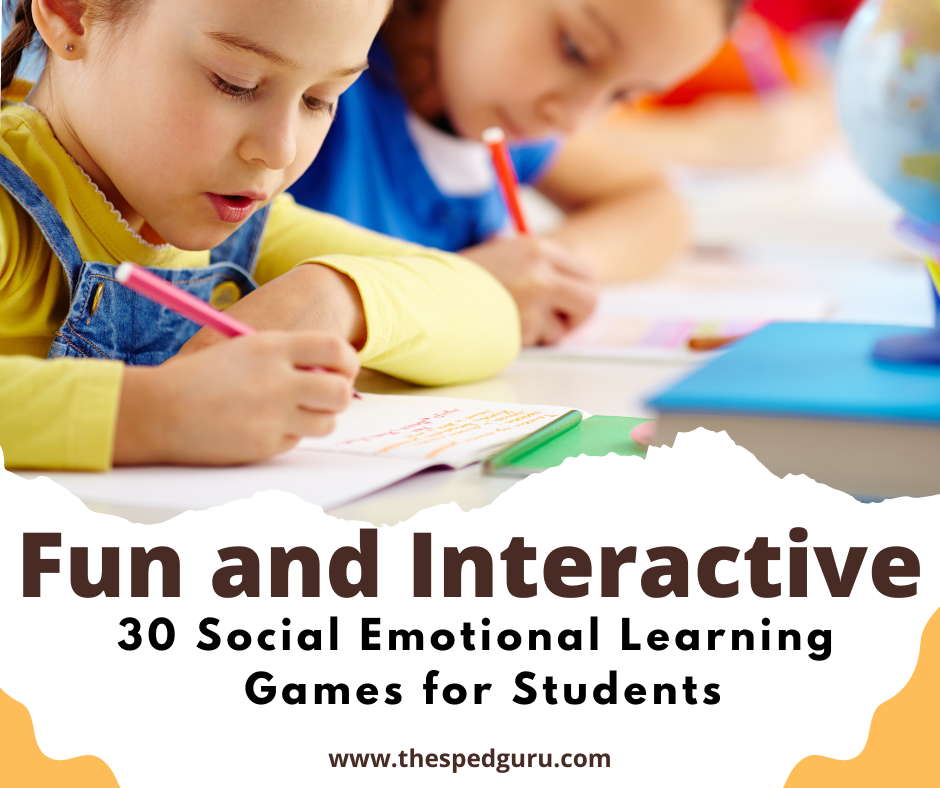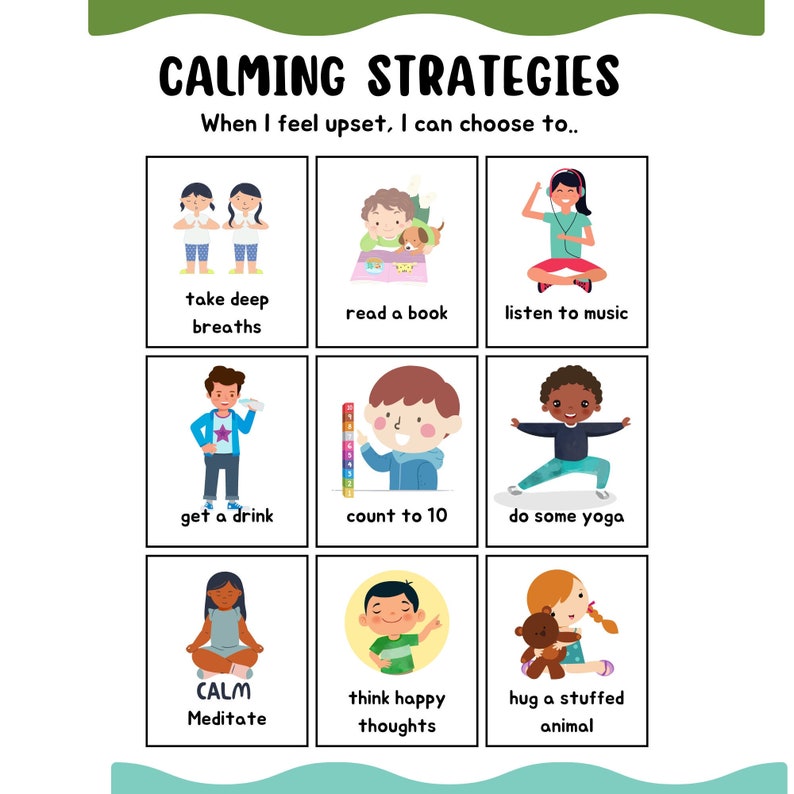Social Emotional learning is very important not only inside the classroom but inside the home.
When children learn social-emotional skills they become better at not only effective communication but also building a positive relationship with their parents and peers.
Social Emotional learning is something that can be taught in a variety of different ways. That is why I’m providing a list of social-emotional games and activities that can be utilized inside the classroom and at home.
These fun activities can help promote self-awareness, self-regulation, empathy, communication, and relationship-building skills.
30 Social Emotional Learning (SEL) Games and Activities for Students.
Self-Awareness:
- Emotion Charades: Act out various emotions and have others guess which emotion you’re portraying.
- Feelings Collage: Create collages that represent different emotions using images from magazines.
- Emotion Wheel: Draw a wheel with different emotions and discuss times when you’ve felt each emotion.
- Mirror Mirror: In pairs, one student mimics the facial expressions of the other, emphasizing emotional awareness.
- Emotion Journal: Encourage students to journal about their daily emotions and reflect on why they felt that way.
Self-Regulation:
- Mindful Breathing: Teach students deep breathing techniques to manage stress and anxiety.
-
Calm Down Corner: Create a space with soothing activities like coloring, puzzles, or stress balls.

- Body Scan Meditation: Guide students to focus on each part of their body, promoting relaxation.
- Emotion Regulation Bingo: Create bingo cards with self-regulation strategies; students mark off the strategies they use.
- Positive Affirmations: Have students create and share positive affirmations to boost self-esteem.
Empathy:
- Role Reversal: Have students switch roles in a situation to better understand each other’s perspectives.
- Empathy Interviews: Pair students and have them interview each other to learn about their feelings and experiences.
- Story Sharing: Students share personal stories that highlight emotions and challenges they’ve faced.
- Empathy Charades: Act out scenarios from different perspectives, promoting understanding of various emotions.
- Empathy Map: Draw a person and label areas with emotions, thoughts, and experiences they might have.
Communication:
- Active Listening Pairs: One student talks while the other listens, then they switch roles and reflect on the experience.
- Story Cubes: Roll dice with images; students use the images to create and share stories with emotions.
- Collaborative Art: Students work together on an art project, practicing teamwork and communication.
- I-Statements: Teach students to express their feelings using “I feel… when… because…” statements.
- Round Robin Storytelling: Students take turns adding a sentence to a story, focusing on emotions and plot.
Relationship-Building:
- Two Truths and a Lie: Students take turns sharing two true facts and one false fact; others guess the lie.
- Compliment Circle: Sit in a circle and give genuine compliments to the person on your right.
- Friendship Web: Pass a ball of yarn while sharing something you appreciate about a classmate.
- Collaborative Problem-Solving: Give students scenarios to solve together, encouraging teamwork and compromise.
- Kindness Challenge: Challenge students to perform acts of kindness for each other throughout the week.
Self-Management:
- Goal Setting: Have students set short-term and long-term goals related to their emotions and behavior.
- Time Capsule: Students create a time capsule with items that represent their current emotions and interests.
- Feelings Thermometer: Draw a thermometer; students mark where their emotions are on the scale and discuss why.
- Worry Box: Decorate a box for worries; students write down and place their worries inside.
- Emotion Tracking App: Design a fictional app that helps students track and manage their emotions.
Remember to tailor these activities to the age and maturity level of your students. SEL activities can greatly contribute to a positive and supportive classroom environment, fostering emotional intelligence and social skills that benefit students throughout their lives.
Grab my social emotional workbook for at home or school here







